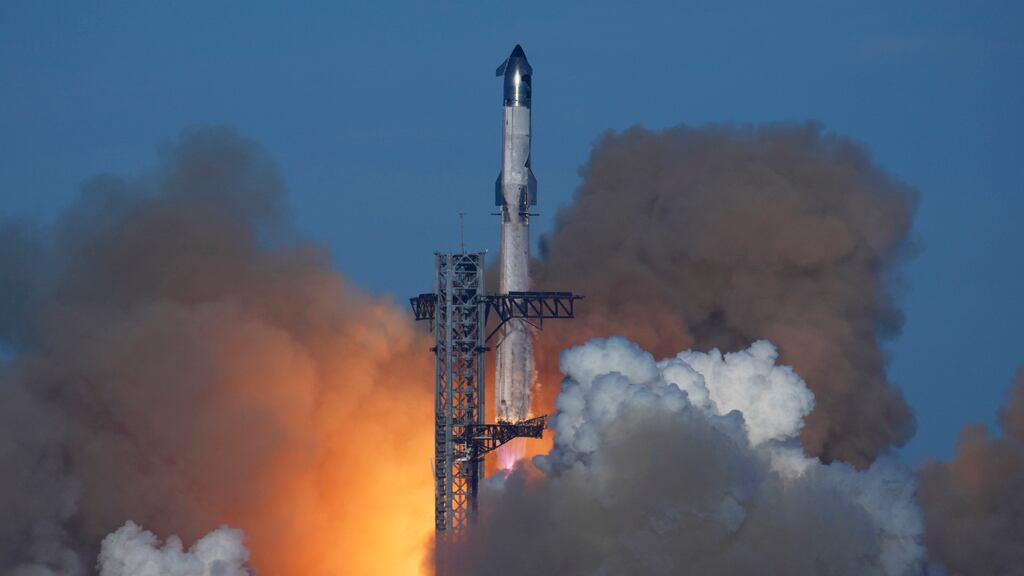SpaceX launched its Starship rocket in its most recent test flight on Thursday, but the spacecraft was destroyed after an exciting booster catch back on the platform. The company of Elon Musk indicated that the six engines of the spacecraft seemed to have shut down one by one, so they lost contact at 8 and a half minutes into the flight.
PUBLICIDAD
The spacecraft was supposed to fly over the Gulf of Mexico from Texas on an almost circular route around the world similar to previous test flights. SpaceX had loaded it with 10 simulated satellites to practice their release. It was the first flight of this new and improved spacecraft.
PUBLICIDAD
A minute earlier, SpaceX used the giant mechanical arms of the launch tower to catch the returning booster, a feat they had only achieved once before. The descending booster remained suspended over the launch platform and was then grabbed by the pair of arms nicknamed chopsticks.
What happened to the SpaceX spacecraft?
The excitement of the capture quickly turned into disappointment not only for the company, but also for the crowds gathered in the southern end of Texas.
"It was great to see the booster descend, but obviously we are disappointed by the spacecraft," said SpaceX spokesperson Dan Huot, adding that it would take time to analyze the data and find out what happened. "It's a test flight. It's an experimental vehicle."
The latest data received from the spacecraft indicated that it reached an altitude of 146 kilometers (90 miles) and a speed of 21,317 kilometers per hour (13,245 miles per hour).
The 123-meter (400-foot) rocket had taken off late in the afternoon from Boca Chica Beach near the border with Mexico. The late hour promised a daytime entry halfway around the world in the Indian Ocean. But the shiny, retro-looking spacecraft never made it that far.
SpaceX had improved the spacecraft for the latest demonstration. The test satellites were the same size as SpaceX's Starlink internet satellites and, like the spacecraft, were intended to be destroyed upon entry.
It was the seventh test flight for the world's largest and most powerful rocket. NASA has reserved a pair of Starships to land astronauts on the moon later in this decade.
Disintegration of the Starship rocket over the Caribbean
Hours earlier in Florida, another rocket company owned by a billionaire—Jeff Bezos’ Blue Origin—launched the newest supersonic rocket, New Glenn. The rocket reached orbit on its first flight, successfully deploying an experimental satellite thousands of kilometers above Earth. However, the first stage booster was destroyed, missing its target landing on a floating platform in the Atlantic Ocean.
